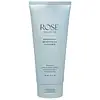What's inside
What's inside
 Key Ingredients
Key Ingredients

 Benefits
Benefits

 Concerns
Concerns

 Ingredients Side-by-side
Ingredients Side-by-side

Water
Skin ConditioningSodium Lauroyl Methyl Isethionate
CleansingCocamidopropyl Betaine
CleansingSodium Methyl Oleoyl Taurate
CleansingSodium Cocoyl Isethionate
CleansingVaccinium Myrtillus Fruit Extract
Skin ConditioningSodium Chloride
MaskingSodium Benzoate
MaskingPolyquaternium-10
Potassium Sorbate
PreservativeSaccharum Officinarum Extract
MoisturisingPanthenol
Skin ConditioningTrisodium Ethylenediamine Disuccinate
Citrus Limon Fruit Extract
MaskingCitrus Aurantium Dulcis Fruit Extract
MaskingSodium Hyaluronate
HumectantAloe Barbadensis Leaf Juice
Skin ConditioningAcer Saccharum Extract
Skin ConditioningPropanediol
SolventTocopherol
AntioxidantPhenoxyethanol
PreservativeMaltodextrin
AbsorbentEthylhexylglycerin
Skin ConditioningWater, Sodium Lauroyl Methyl Isethionate, Cocamidopropyl Betaine, Sodium Methyl Oleoyl Taurate, Sodium Cocoyl Isethionate, Vaccinium Myrtillus Fruit Extract, Sodium Chloride, Sodium Benzoate, Polyquaternium-10, Potassium Sorbate, Saccharum Officinarum Extract, Panthenol, Trisodium Ethylenediamine Disuccinate, Citrus Limon Fruit Extract, Citrus Aurantium Dulcis Fruit Extract, Sodium Hyaluronate, Aloe Barbadensis Leaf Juice, Acer Saccharum Extract, Propanediol, Tocopherol, Phenoxyethanol, Maltodextrin, Ethylhexylglycerin
Prunus Armeniaca Fruit
AstringentAloe Barbadensis Leaf Juice
Skin ConditioningPyrus Malus Juice
Skin ConditioningPrunus Domestica Wood Ash
Vitis Vinifera Juice
AntioxidantVitis Vinifera
MaskingHippophae Rhamnoides Fruit Juice
Skin ConditioningCalendula Officinalis Flower Oil
MaskingHelianthus Annuus Seed Oil
EmollientPrunus Armeniaca Kernel Oil
MaskingCalendula Officinalis Flower Extract
MaskingAchillea Millefolium Extract
CleansingTrifolium Pratense Flower Extract
AstringentEchinacea Purpurea Root Extract
MoisturisingRosmarinus Officinalis Leaf Extract
AntimicrobialGlycerin
HumectantTocopheryl Glucoside
EmollientLauryl Glucoside
CleansingCoco-Betaine
CleansingZingiber Officinale Root Extract
MaskingPanax Ginseng Root Extract
EmollientGarcinia Mangostana Fruit Extract
Skin ConditioningLycium Barbarum Fruit Extract
AstringentVaccinium Macrocarpon Fruit Extract
AstringentVaccinium Myrtillus Fruit Extract
Skin ConditioningLactic Acid
BufferingBenzyl Alcohol
PerfumingDehydroacetic Acid
PreservativeZingiber Aromaticus Extract
Skin ConditioningIsopentyldiol
HumectantRibose
HumectantStyrene/Acrylates Copolymer
Euterpe Oleracea Sterols
Skin ConditioningCitrus Limon Peel
MaskingMalpighia Glabra Fruit
Skin ConditioningEmblica Officinalis Fruit
Skin ConditioningAdansonia Digitata Oil
EmollientMyrciaria Cauliflora Pulp
Skin ConditioningDaucus Carota Sativa Callus Lysate
AntioxidantCocos Nucifera Water
MaskingLycium Barbarum Amino Acids
Skin ConditioningTapioca Starch
Potassium Sorbate
PreservativeSodium Benzoate
MaskingPrunus Armeniaca Fruit, Aloe Barbadensis Leaf Juice, Pyrus Malus Juice, Prunus Domestica Wood Ash, Vitis Vinifera Juice, Vitis Vinifera, Hippophae Rhamnoides Fruit Juice, Calendula Officinalis Flower Oil, Helianthus Annuus Seed Oil, Prunus Armeniaca Kernel Oil, Calendula Officinalis Flower Extract, Achillea Millefolium Extract, Trifolium Pratense Flower Extract, Echinacea Purpurea Root Extract, Rosmarinus Officinalis Leaf Extract, Glycerin, Tocopheryl Glucoside, Lauryl Glucoside, Coco-Betaine, Zingiber Officinale Root Extract, Panax Ginseng Root Extract, Garcinia Mangostana Fruit Extract, Lycium Barbarum Fruit Extract, Vaccinium Macrocarpon Fruit Extract, Vaccinium Myrtillus Fruit Extract, Lactic Acid, Benzyl Alcohol, Dehydroacetic Acid, Zingiber Aromaticus Extract, Isopentyldiol, Ribose, Styrene/Acrylates Copolymer, Euterpe Oleracea Sterols, Citrus Limon Peel, Malpighia Glabra Fruit, Emblica Officinalis Fruit, Adansonia Digitata Oil, Myrciaria Cauliflora Pulp, Daucus Carota Sativa Callus Lysate, Cocos Nucifera Water, Lycium Barbarum Amino Acids, Tapioca Starch, Potassium Sorbate, Sodium Benzoate
Alternatives
Ingredients Explained
These ingredients are found in both products.
Ingredients higher up in an ingredient list are typically present in a larger amount.
Aloe Barbadensis Leaf Juice comes from leaves of the aloe plant. Aloe Barbadensis Leaf Juice is best known for helping to soothe sunburns. It is also anti-inflammatory, moisturizing, antiseptic, and can help heal wounds.
Aloe is packed with good stuff including Vitamins A, C, and E. These vitamins are antioxidants, which help fight free-radicals and the damage they may cause. Free-radicals are molecules that may damage your skin cells, such as pollution.
Aloe Barbadensis Leaf Juice also contains sugars. These sugars come in the form of monosaccharides and polysaccharides, folic acid, and choline. These sugars are able to help bind moisture to skin.
It also contains minerals such as calcium, 12 anthraquinones, fatty acids, amino acids, and Vitamin B12.
Learn more about Aloe Barbadensis Leaf JuicePotassium Sorbate is a preservative used to prevent yeast and mold in products. It is commonly found in both cosmetic and food products.
This ingredient comes from potassium salt derived from sorbic acid. Sorbic acid is a natural antibiotic and effective against fungus.
Both potassium sorbate and sorbic acid can be found in baked goods, cheeses, dried meats, dried fruit, ice cream, pickles, wine, yogurt, and more.
You'll often find this ingredient used with other preservatives.
Learn more about Potassium SorbateSodium Benzoate is a preservative. It's used in both cosmetic and food products to inhibit the growth of mold and bacteria. It is typically produced synthetically.
Both the US FDA and EU Health Committee have approved the use of sodium benzoate. In the US, levels of 0.1% (of the total product) are allowed.
Sodium benzoate works as a preservative by inhibiting the growth of bacteria inside of cells. It prevents the cell from fermenting a type of sugar using an enzyme called phosphofructokinase.
It is the salt of benzoic acid. Foods containing sodium benzoate include soda, salad dressings, condiments, fruit juices, wines, and snack foods.
Studies for using ascorbic acid and sodium benzoate in cosmetics are lacking, especially in skincare routines with multiple steps.
We always recommend speaking with a professional, such as a dermatologist, if you have any concerns.
Learn more about Sodium BenzoateVaccinium Myrtillus Fruit Extract comes from the bilberry plant. This plant is native to Eurasia.
Bilberry contains antioxidant compounds called anthocyanins. Anthocyanins help fight free-radicals. Free-radicals are molecules that may damage your skin cells. Fighting off these molecules can help reduce signs of aging.
Vaccinium Myrtillus Fruit Extract also helps reduce irritation.
Learn more about Vaccinium Myrtillus Fruit Extract